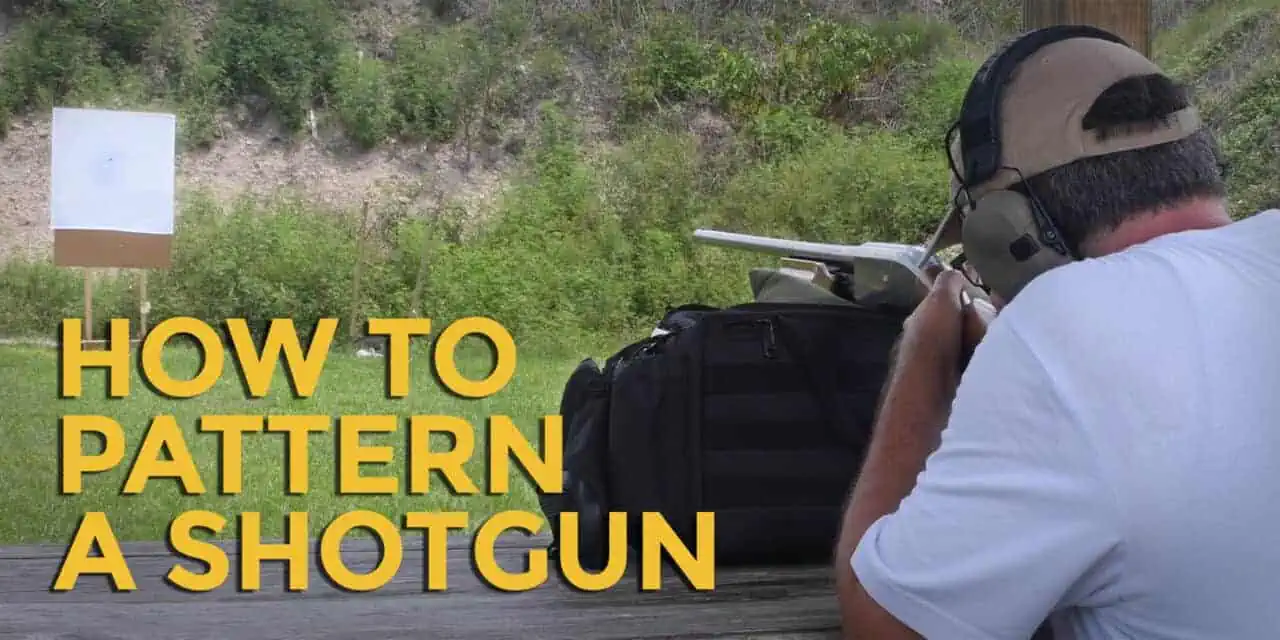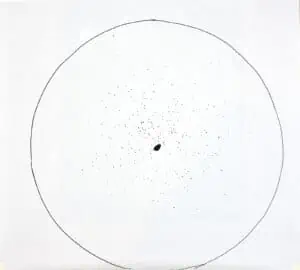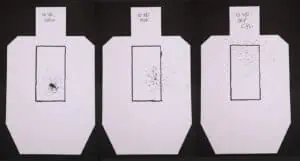How To Pattern A Shotgun
Shotguns, by their very nature, spread out their projectiles over a wide area. This makes them popular for many activities, such as hunting, competition and personal defense. Unlike rifles and pistols, which send just one round downrange each time the action cycles, a shotgun sends out groups of pellets each time you pull the trigger. This is both a good thing and a bad thing. It’s good in that those pellets can spread out and hit targets in mid-flight, or in the case of buckshot, impact a living target all at once and bring it down in a hurry.
Fast Facts: How To Pattern A Shotgun
- You pattern your shotgun to create a baseline of performance for your gun and ammo
- Shotgun chokes and ammo choices affect how your shotgun will pattern
- Defensive shotguns, competition shotguns and hunting shotguns have different requirements for a good pattern
The pellets from your shotgun are all going out in one big clump. This means you can’t predict the flight path of any one pellet. Instead, you have to gauge the pattern those pellets will make at any given distance. Hence, the term patterning your shotgun.
Having a good idea of what pattern any given shell will deliver means you have more confidence in what your shotgun will do. Knowing how to pattern a shotgun means you can make informed choices about ammunition and choke sizes and be ready for the shot when it happens.
Why Does Patterning Your Shotgun Matter
As you may have figured out, patterning a shotgun is roughly analogous to sighting in a rifle. You take the time to get a zero with your rifle, and then spend more time to verify your accuracy at different distances. Knowing how to pattern a shotgun means you know what shot you can make at various ranges with your ammo and gun of choice.
This becomes especially important if you have a defensive or home defense shotgun. Just like a missed shot that can hit an innocent bystander, a stray pellet can lead to tragedy inside a home. Patterning a shotgun with your defensive round of choice means you know what shots you can take safely in a defensive situation. You’ll also know when you’ve reached the limits of what your shotgun can do.
Shotguns are more than just a defensive firearm, however, so we’re going to look at how to pattern a shotgun for hunting and competition purposes as well.
How To Pattern A Shotgun For Hunting
Let’s start off with how to pattern a shotgun for hunting. The reason why we do this is to ensure your choice of choke and load throw enough pellets towards where your target might be in order to take it down. Too tight of a pattern, and your pellets won’t spread out enough to hit your target. Too broad of a pattern, and the pellets will spread out too far, lowering your chances of making the shot. Even worse, too broad of a patter can mean you won’t have enough pellets hit to make an ethical kill, leaving your target wounded and in pain.
My hunting shotgun is a timeless classic, a 20 gauge Remington 870 Wingmaster Express. I use this gun primarily for early season dove and quail. These birds require short range shots taken quickly, so the lack of a choke in this gun isn’t that much of a drawback. My hunting round of choice is Federal Game-Shok #7.5 20 Gauge loads, and I’m going to pattern the gun at 25 yards, which is a typical engagement distance for this type of hunting.
Why Pattern A Hunting Shotgun?
The goal of patterning your hunting gun is to get an idea of how your pellets are moving through the air. You want a pattern that is evenly distributed across a 30 inch circle. 30 inches is used because experience has shown that if you’re off-target by 15 inches (the radius of a 30 inch circle) in one direction or another, you’re probably going to miss.
Required Gear
To pattern this shotgun, I used a roll of three foot wide bulletin board paper from my local craft store. We set it up 25 yards away from my shooting position. I made a small dot on the paper to give me an aiming point. Then, I fired a round of my hunting ammo at the target. The shot landed in a nicely distributed pattern slightly above my aiming point. This tells me that the point of impact for this round with this gun will be slightly above where I aim. That’s something I need to keep in mind on my next hunt. The pattern itself is clumped in the center and evenly spread out, which is exactly what I want; Looks like this combination of shotshell and shotgun is good to go.
Because that shotgun has no choke, I’d have to look at changing my shot size if I wasn’t getting the results I needed. A larger shot size, like a #6 game load, would give me fewer pellets on the target. However, each pellet would be larger and heavier. This means that if they hit, they have a better chance of scoring a kill than a lighter round would have.
As I said before, I primarily use a shotgun for hunting quail and dove. Patterning a shotgun for other birds, such as turkey, requires different priorities. Turkey loads tend to be heavy, 12 gauge loads of #6 or larger shot, and a tight pattern (far tighter than what’s needed for quail) is needed for a quick, clean kill.
How To Pattern A Defensive Shotgun
Patterning a shotgun for defensive usage has a different priority. When we pattern a shotgun for hunting, we want to make sure some of the pellets hit the target. When we pattern a defensive shotgun we want to make sure all the pellets hit the target. A stray pellet missing the target and flying downrange can have the same tragic effect as a stray bullet flying downrange. So, knowing from how far you can keep all your buckshot rounds on-target with your self defense round of choice is an important part of owning a defensive shotgun.
I have a Mossberg 500 with no choke that I use as a defensive shotgun. I load it with 8 pellet Federal FliteControl #00 buckshot. The longest shot inside of my house is 12 yards. If I can hold all the pellets from that combination of gun and ammo into the center of a standard silhouette target at 15 yards, I know I can use it with confidence in a defensive situation.
My first shot was at five yards, which is a very common distance for home defense encounters. I then moved back to 15 yards to verify that everything was on-target at that distance. Based on these results, I am very confident that my shotgun and ammo will perform well when the stakes are very high. Other types of buckshot have different patterns that spread out at different rates. Knowing what the maximum distance you can keep your pellets on target is the goal of this exercise. So, take your gun and ammo to the range and find out for yourself.
How To Pattern A Shotgun For Competition
Patterning your loads is an essential part of all the shotgun sports. If you don’t know how spread out the pellets from your gun are at common engagement distances, you’ll never be certain if your missed shots were due to you or your gun.
Each shotgun sport has different goals, and therefore requires a different combination of chokes and ammunition. The targets in skeet shooting tend to be close in, under 20 yards. Shotguns set up for skeet use chokes that open up the pattern to ensure a hit on a clay pigeon that’s close to them and moving across their field of view.
What Does A Shotgun Choke Do?
Chokes are small metal tubes that alter the density of the shot as it flies through the air. There are pages and pages of information out there about the exact effects of each choke on your shot pattern. However, in essence, a full choke tightly constricts the shot pattern. A modified choke has less constriction. An improved cylinder choke constricts the pattern even less, though more than just a plain, smoothbore barrel would have.
Patterning Your Shotgun For Trapshooting And Other Sports
Trapshooting has longer engagement distances than skeet, with targets that are moving away from you. This requires a tighter choke to create a smaller pattern which will spread out less as it moves downrange. On the other hand, sporting clays can have a variety of targets going in all sorts of directions. This requires you to know how your gun patterns not with just one choke, but with a number of different chokes. I talked with Rich Cole from Cole Fine Guns and Gunsmithing about the process of setting up your shotgun for trap shooting and sporting clays.
“When we’re talking about how to pattern a shotgun, we’re talking about a three step process,” Cole said. “The first step is shooting your gun with your chosen choke and load to see how it impacts on paper. You want a pattern that disperse out to the edges, with no obvious clumping or clustering. The the second step is to make sure both barrels are converging towards the same area. Trap and sporting clays guns tend to be double-barreled guns, so if one is shooting right and one is shooting left, you have a problem, and you’ll probably need to see a gunsmith to get things sorted out.”
“The third step in the process is to verify that your point of impact (POI) is where it should be,” Cole continued. “With a rifle or pistol, that’s easy, just adjust your sights to line up the holes in the target with where you’re aiming. When we’re shooting a flying clay, we’re not shooting where the target is, but rather where it’s going to be. That means we need to use a pattern board and shoot it several times using the same motion we use to engage a flying target. The goal here is to see how the pellets are clustering if you were engaging an actual clay pigeon. Then, adjust the gun to fit you better if you’re having trouble putting the pellets where they’re supposed to be going.”
Setting Up Your Shotgun for 3 Gun
However, I shoot 3 Gun matches, not trap or skeet. 3 Gun matches have very different targets from the other shotgun sports. It’s not uncommon to see a stage in a 3 Gun match that is . Ranges for these types of targets vary from just under 10 yards to over 20 yards. On top of this, most steel targets are either poppers, plates or some other target that must fall down to count as a hit. This means that if you just graze the target with a few pellets, it won’t fall down, costing you valuable seconds while you shoot it again.
I use a Mossberg 930 JM Pro for 3 Gun, which I’ve upgraded with OR 3Gun internals for better reliability. The shotgun uses add-on choke tubes. So, now my task becomes choosing the right ammunition as well as choosing the right choke to hit the targets. My 3 Gun ammunition is Federal Target #7.5 target loads. These shells have performed well for me for literally decades – I’ve been pleased with their results.
I’m using the Accu-Choke set that came with the gun. It includes Full, Modified and Improved Cylinder chokes that thread into the barrel of my shotgun.
For 3 Gun, then, I need a shot pattern that puts enough pellets to knock down a target, but also allows me some margin of error as I move from target to target. I’ll set up a USPSA target at 10 yards, and highlight just the “A” zone. This area roughly corresponds to the sizes of the shotgun targets used in 3 Gun. Our goal is to find a choke tube that gives us an even pattern that is about twice the size of the target, which should insure that at least half of the pellets will hit the steel and knock it down.
Test, Evaluate And Then Update
It looks like the full choke is way too tight for a ten yard shot, but I might want to consider it for a stage with longer shots on steel targets. The modified choke is better. It should probably be my choice for a stage with a mixture of near and far targets.
The improved cylinder choke, however, is probably my best option at 10 to 15 yards. I’ll use it whenever I have targets at those distances.
The Chinese philosopher Sun-Tzu once said, “Know yourself, know your opponent, and you will be invincible. Knowing how to pattern your shotgun means knowing the limitations of what your shotgun can do. This lets you work within those limits and make the shot when you need to make it.






